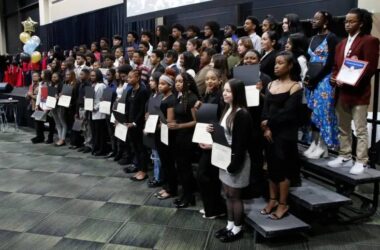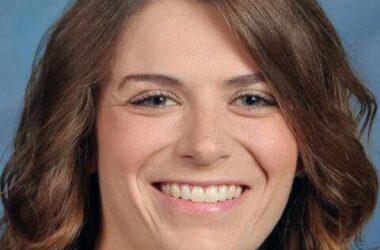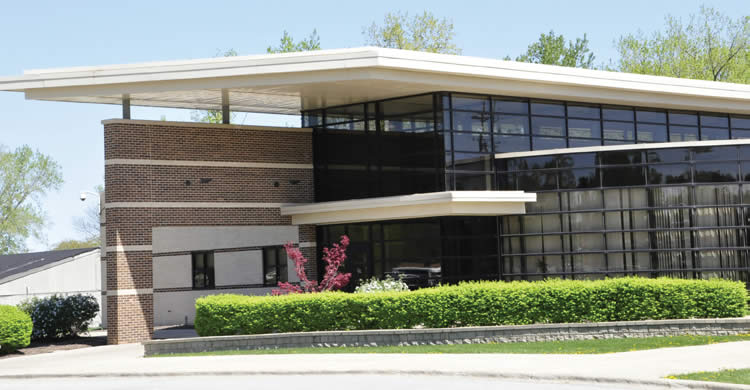Park Forest, IL–(ENEWSPF)– The Park Forest-Chicago Heights School District 163 board meeting held on April 4, 2011, proved to be an evening of celebrating advancements, looking to the future . . . and butting heads.
Board Members and administrators present that evening included: Walter Mosby (President), Cheryl Franklin (Secretary), Denis Foris (Clerk), Phil Conboy, Lance Jefferson, Jacqueline Jordan, Margaret McDannel, Shirley McDonald, and Melvin Pumphrey. Superintendent Dr. Joyce Carmine was also in attendance.
District 163 celebrated increases in student attendance across all schools in March, with Forest Trail Middle School having the highest student attendance rate at 96.70%. All intermediate and middle schools reached the 95% target attendance rate.
Community member Suzie Brown expressed concern that only 37% of student in District 227 (consisting of the high school for which District 163 schools serve as a feeder) reached the score of 23 needed to pass state tests. Superintendent Dr. Joyce Carmine clarified that the test used for this data was based on the ACT – something taken to get into college, not high school. Rich East High School (District 227) has even been listed as one of the top schools in the United States by U.S. News and World Report, Carmine said. According to Carmine, only ten high schools in the state of Illinois made annual yearly progress (AYP). However, District 163 has made many advances in this regard, Carmine said.
By way of example, Dr. Carmine said District 163 representatives meet on a monthly basis with District 227, and many District 163 students are involved in the algebra program offered at the high school level. All but one student earned high school credit for algebra while in eighth grade. Four classes in district 163 are taking high school algebra this school year, while last year, only two classes were involved in the program. District 163 has improved its ISAT scores, so now the district focus will shift slightly to better prepare the students as they go into high school.
Mohawk Intermediate Center self-contained special education teacher Regina Nottke provided another promising note to the evening with her presentation on efforts to improve instruction as well as test scores for all speech, self-contained, and academic resource students. Taking a hint from the “Reading First” approach used by the district’s reading specialists and resource teachers, Nottke and her Professional Learning Community (PLC) team evaluated only the students who took the ISAT for data. The Program began on October 2, 2010. Using charts developed by reading specialists, Nottke and her PLC evaluated student ability in reading sub skills that most commonly appear on standardized tests.
Skills evaluated included: identifying main idea, sequencing, context clues, and figurative language. The PLC further broke student data down by ability groups. To assist students, the PLC established weekly ISAT prep classes that met Monday to Thursday during school hours for forty-five minutes each day. Teachers targeted instruction at the specific skill levels of students but also had students use ISAT material for practice – as that is what students would be seeing on testing days. The PLC teachers would pre and post-test students on each skill. Students seemed to benefit from the small group instruction, and, eventually, the PLC would like to create data for the students takeing Illinois Alternative Assessments as well as the ISAT. This opportunity also gave the PLC teachers the chance to see which special education students were ready to enter mainstream classroom or move to resource room instruction.
One of the evening’s most controversial topics came under discussion at the Finance Committee meeting prior to the Regular Session. Board members were clearly divided over the issue of establishing a foundation that would, among other things, provide scholarships for teachers to improve their classrooms. Many board members expressed concern that they still did not have enough information to make a decision about the foundation. Board member Melvin Pumphrey wanted a more focused discussion of the pros and cons of forming such a committee.
One of the more vocal opponents of such a foundation was board member Margaret McDannel. Arguing that she had prior experience with such foundations, McDannel’s main argument against such an endeavor was the amount of work that it would take to form. McDannel demanded a list of names of the people on the Board who would want to compose such a foundation committee.
Board President Walter Mosby said that those involved with the foundation should either “have money, know how to get it, or don’t mind hustling to get the money.” Mosby emphasized that it is all about the recruitment process – including the recruitment of local business and politician involvement.
Board member Shirley McDonald reminded the board that the foundation must have transparency in regards to where foundation money would be going. She argued, “If I give $100, I want to see something my $100 did.” She argued that few people would want to donate unrestricted funds. The board suggested that foundation money could also be used to update the district’s fitness centers – something the community would also benefit from. Mosby also suggested the possibility of using money to reinstitute cut district programming such as the spring musical.
When it came to a vote, McDannel provided an immediate and emphatic “no” while Pumphrey only voted “yes” after considerable pause. President Mosby suggested that the foundation remain independent of the Board of Education, and Lance Jefferson proposed that an ad hoc committee (not the Finance Committee) be established for this purpose. In the end, board members Jefferson, Jordan, McDonald, Mosby, and Pumphrey volunteered to serve on the foundation committee. Several volunteers from the administration, teaching staff, and community present at the meeting also volunteered.
Also discussed at the Finance Committee meeting was the change from the current to a bulk food program. Superintendent Carmine, as well as Phil Conboy, Cheryl Franklin, Lance Jefferson, and Margaret McDannel have been exploring alternatives to the current food service program, and they viewed the bulk food program currently used in Blue Island. The food would be delivered in large trays which would then be put in the oven to cook.
Pros of such a program include a more appealing presentation, and preparation in bulk (rather than food heated in individual cardboard containers) allows the food to brown more evenly while heating. Rather than absorbing the cost and immediately instituting the program at all schools, the board voted to try the program first at Forest Trail in the fall.
If successful at Forest Trail, the board will look at expanding the program to other buildings. Such a trial period would also enable the schools to consider the challenges of storing the rolling serving carts for the larger food trays as well as the possibility of having to hire an additional staff member for food service. It is anticipated the amount of waste generated by the new program would be comparable to the old program.
Another hot-button issue for the evening was Lance Jefferson’s request to allow a temporary sign for his church to be displayed in front of Algonquin Primary Center – which Jefferson’s church uses for services. The sign would remain in front of the school seven days a week as long as the church uses the space for weekend services.
Jefferson argued that the sign would not be in violation of the separation of church and state because his congregation would not be allowed to hold services at the school at all if that was the case. Shirley McDonald expressed concerns over parents who would have different wishes for the religious orientation of their children. The board decided to table the issue until receiving legal council.
Other agenda items voted on and approved that evening include: the extension of the regular and special education transportation agreements (with no increase in cost), the legacy audit engagement letter, the Bloom Township software purchase, the milk agreement with CloverLeaf Farms (at no increase in cost), the resolution of intent to issue funding bonds not to exceed $13 million to pay claims against the district, and the publication of bid specifications for sidewalk repairs, tree trimming, and asphalt repairs. Board members also voted to dismiss and non-renew the contracts for three first-year teachers as well as one fourth-year, part-time teacher.








